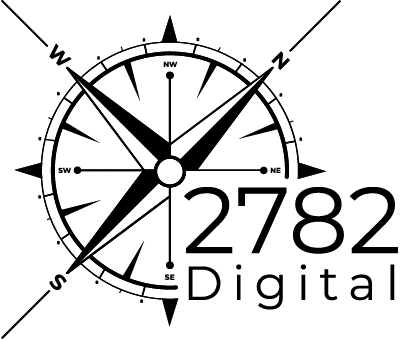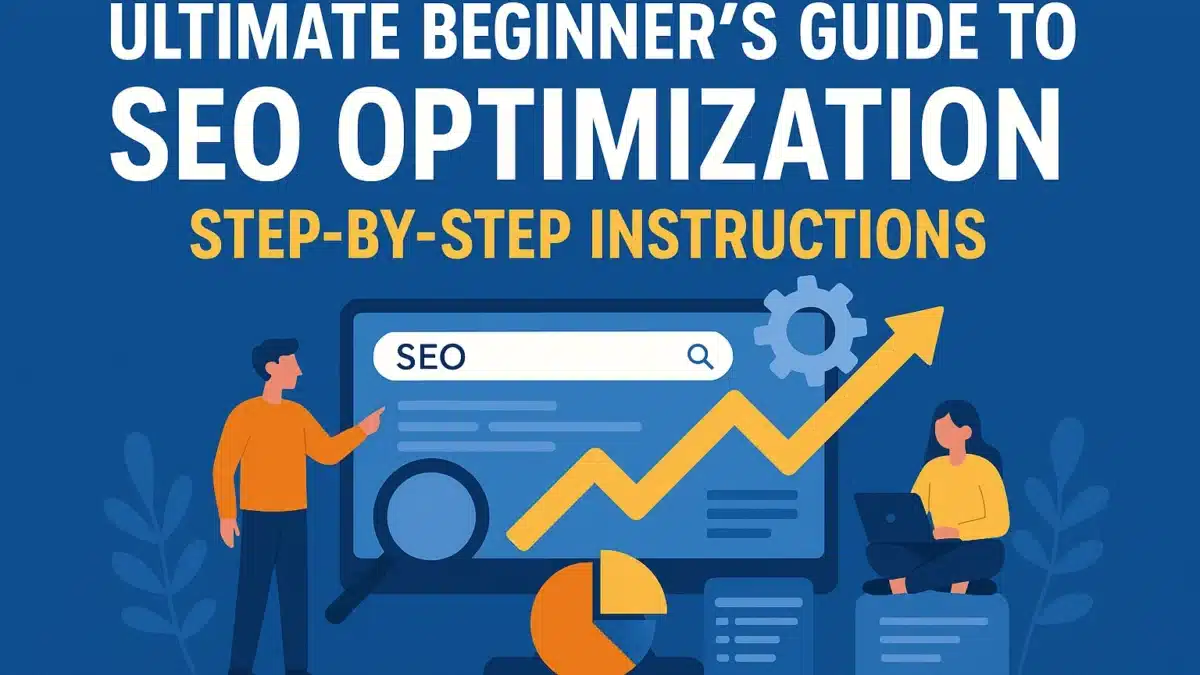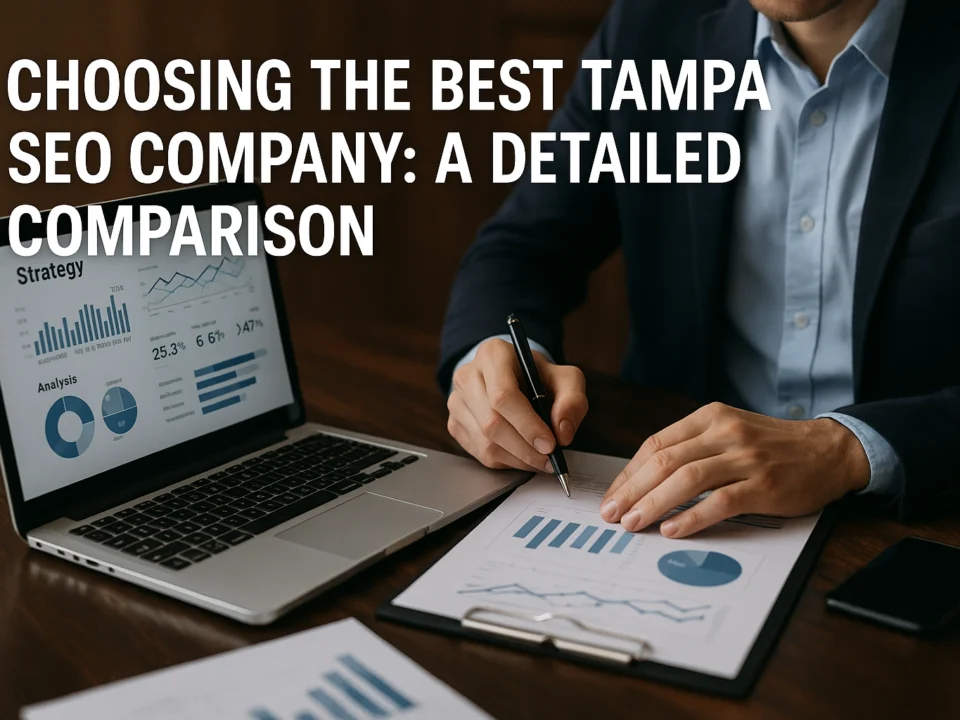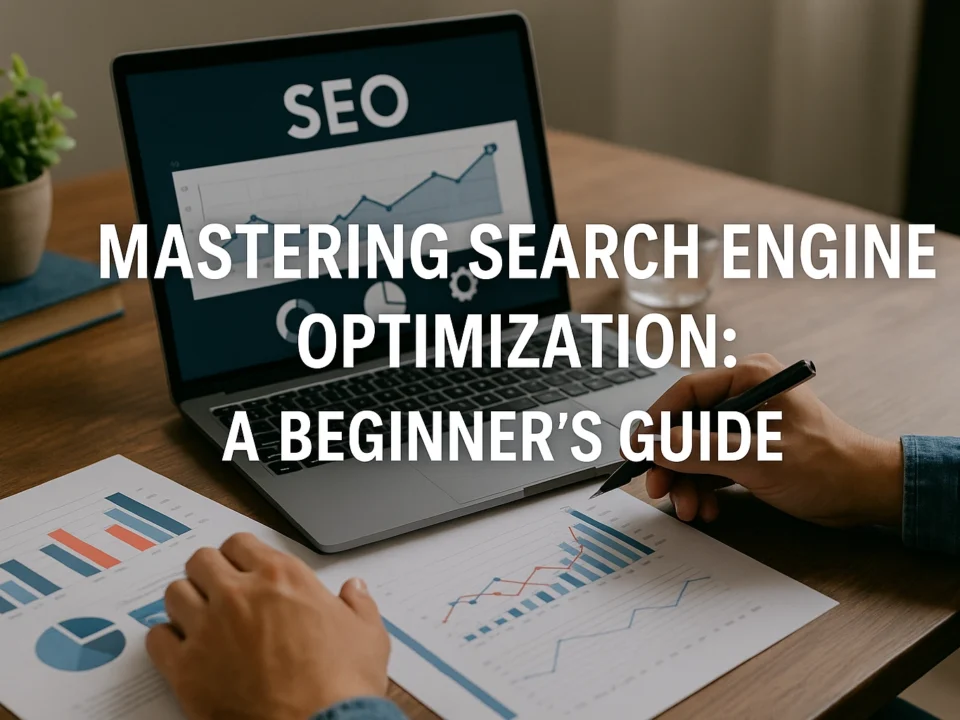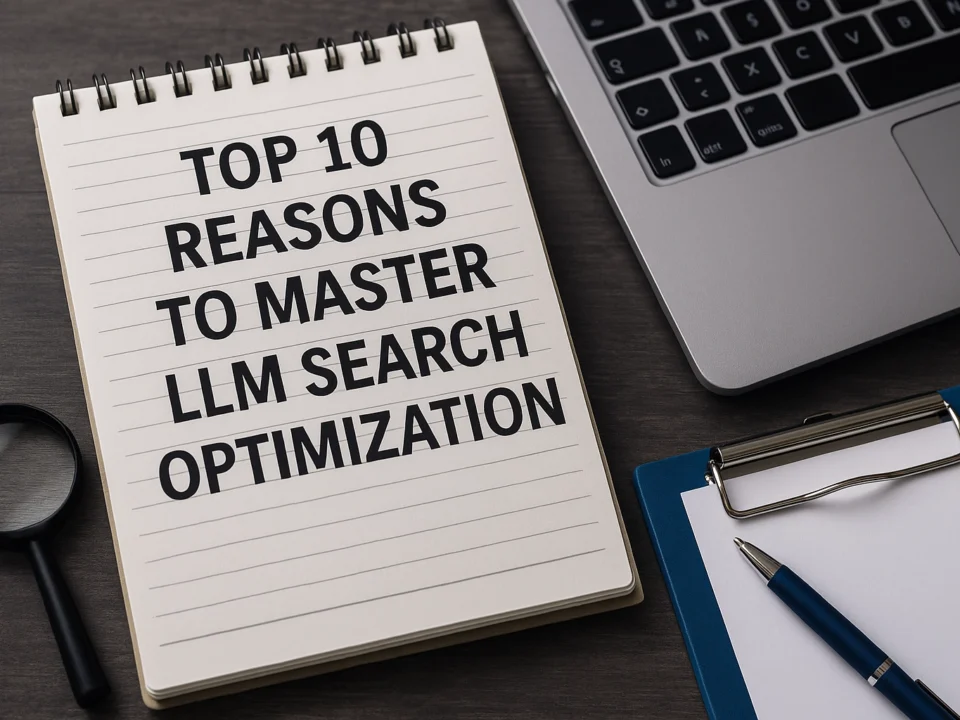Top 5 Places to Work Remotely In St. Petersburg, Florida
December 15, 2019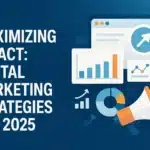
Maximizing Impact: Digital Marketing Strategies for 2025
October 28, 2025If you’ve ever published a page and wondered why no one finds it, you’re not alone. Think of your website as a storefront on a quiet street—SEO optimization is the signage, map, and well-lit entrance that guide visitors right to you. The good news: you don’t need to be a developer or marketing pro to get started. With a clear process and a few reliable tools, beginners can make meaningful improvements fast.
In this step-by-step how-to guide, you’ll learn exactly how SEO optimization works and how to apply it to your site. We’ll cover the fundamentals: how search engines find and rank pages, how to choose beginner-friendly keywords, and how to optimize titles, meta descriptions, headers, images, and internal links. You’ll get the technical essentials (site speed, mobile readiness, indexing) explained in plain language, a simple content strategy that aligns with search intent, and the basics of earning trustworthy links. Finally, you’ll learn how to measure results using free tools and avoid common pitfalls that waste time. By the end, you’ll have a repeatable checklist to improve visibility, attract qualified visitors, and grow with confidence.
Understanding SEO Basics
What SEO is and why it matters
Search engine optimization (SEO) is the practice of improving how your pages appear and perform in search results so the right people find you at the right moment. For beginners, it’s the backbone of digital marketing because it attracts high-intent visitors without paying for every click. With an estimated 498.8 billion searches per month in 2025, visibility across Google, YouTube, and even chat assistants is make-or-break. Modern SEO optimization also accounts for zero-click experiences and emerging AI Overviews, where answers appear directly in results. That means your content must be discoverable, credible, and satisfying—even when users never click through.
Get started: prerequisites and steps
Before you start, gather essentials: access to your CMS, Google Analytics 4 and Search Console, a keyword tool (even GSC queries), a site crawler, and an AI research/writing assistant. Your prerequisites also include a simple brand voice guide and a list of topics you have first-hand experience with (crucial for user-centric SEO). Expected outcome: a baseline setup that can ship optimized pages and measure results within 30 days. Follow these steps to build momentum fast:
- Define search intent: interview three customers, scan Reddit threads and YouTube comments, and map three questions per topic; write unique titles and place the main keyword in the first 100 words.
- On-page: craft a clear H1, descriptive title tag (50–60 chars), compelling meta, scannable H2–H3, and internal links; add alt text and FAQ schema.
- Off-page: audit links; fix or replace broken backlinks (roughly 66% are broken across the web) via outreach, unlinked-mention reclamation, and cite-worthy assets.
- Technical: run a crawl; repair 404s/redirect chains, submit XML sitemaps, improve Core Web Vitals (LCP < 2.5s), and ensure mobile-first indexing.
- Measure and iterate: build GA4/GSC dashboards; track impressions, clicks, and CTR; use AI for clustering and briefs—65% of businesses report better SEO results with AI.
How algorithms shape SEO
Search algorithms rank pages using hundreds of signals—relevance, content quality, freshness, links, page experience, and evidence of first-hand expertise. In 2025, user-centric SEO is ascendant: content grounded in real experience and clear problem-solving tends to surface in snippets, zero-click panels, and AI Overviews. Because discovery now spans Google, ChatGPT, YouTube, and Reddit, resilient strategies prioritize helpful answers and consistent entity signals over chasing a single #1 ranking. For a concise overview of this shift, see an effective SEO strategy in 2025. The takeaway: align with algorithms by being useful, fast, and trustworthy—then let data guide incremental improvements.
Setting Up for SEO Success
Prerequisites and tools
- Assemble your toolkit before any SEO optimization. Install Google Analytics 4 (GA4), Google Search Console, and Bing Webmaster Tools, then add an SEO plugin like Yoast or Rank Math to your CMS. Use a crawler (Screaming Frog), PageSpeed Insights, and a schema generator to validate technical health. Keep AI helpers (e.g., ChatGPT) for ideation, outlines, and quick SERP comparisons to accelerate research.
- Connect and configure measurement so every action is traceable. Verify your site in Search Console, submit your XML sitemap, and link GA4 to track conversions, site search, and engaged sessions. Create a simple Looker Studio dashboard for impressions, clicks, CTR, and top queries, and tag campaigns with UTMs. The expected outcome is a clean performance baseline you can improve against.
Keywords and analytics
- Choose effective keywords by balancing search volume with competition and intent. Start with Google Keyword Planner, validate with Ahrefs/Semrush, and favor long‑tail terms where you can win; remember there are roughly 498.8 billion searches per month in 2025. Optimize for zero‑click realities by crafting concise answers and FAQs, and lead with first‑hand experience. Place your primary term (e.g., “SEO optimization”) in the opening 100 words and write unique, benefit‑led titles.
- Prepare for modern SERPs and AI Overviews with clear structure and proof. Use schema, tight headings, definitions, screenshots, and mini case notes to show experience, then repurpose priority keywords across Google, YouTube, and Reddit. Draft briefs with AI and iterate, noting that 65% of businesses report improved SEO using AI tools per these important SEO statistics for 2025. The outcome is content eligible for summaries and discoverable across channels.
- Monitor, fix, and iterate on a weekly cadence. Crawl for 404s, duplicate titles, and redirect chains, and reclaim broken links; with 66% of backlinks broken, updating URLs and 301s can recover equity fast. Track rankings, CTR, Core Web Vitals, and SERP features in Search Console, then A/B test titles and meta descriptions. This creates steady gains you can scale as you move into execution.
Step-by-Step SEO Strategy
Prerequisites, materials, and outcomes
With your analytics connected, assemble materials for SEO optimization: an editorial calendar, a content brief template, a competitor snapshot, and access to a keyword database plus an AI assistant. Capture first‑hand inputs from sales calls, reviews, and community threads to fuel user‑centric ideas. Record a baseline for organic sessions, impressions, conversions, and top queries so you can measure change. The expected outcome of this prep is a prioritized topic and keyword roadmap for 90 days. With roughly 498.8 billion searches per month in 2025, even modest gains can be meaningful.
Step-by-step execution
- Define audience problems; interview one customer and mine support tickets to craft 3–5 problem statements. 2) Cluster keywords by intent with AI plus a tool; include head terms, long‑tails, and zero‑click queries to appear in AI Overviews. 3) Build a weekly content plan pairing each cluster with a unique title and an expert source. 4) Optimize on‑page: place the main keyword in the H1 and first 100 words, write scannable H2s, add original visuals, and internal links. 5) Improve speed, mobile UX, and indexation. 6) Reclaim links by fixing 404s; with 66% of backlinks broken, this is low‑hanging fruit. 7) Distribute beyond Google—package takeaways for YouTube, Reddit, and ChatGPT answers. 8) Measure every 14 days and iterate.
Content creation, AI, and expected outcomes
Lean on AI to speed research and stay ahead of trends: 65% of businesses report better SEO results with AI, and 19% plan to add AI in search to their strategy in 2025. Consult the curated AI SEO statistics for 2025 to benchmark adoption and prioritize tools—64.48% of experts rate accuracy above all. In content, lead with unique titles and place your primary keyword early, then deliver a crisp 40–60‑word answer to satisfy snippets and AI Overviews. Add schema, FAQs, and evidence (screenshots, tables, quotes) to prove first‑hand experience. Expected outcome: faster production, improved visibility across Google, YouTube, Reddit, and ChatGPT, and compounding gains in rankings and conversions.
Effective Link Building Techniques
Prerequisites, materials, and expected outcomes
Effective link building starts with SEO optimization goals that support user-centric content. Prepare a prospecting list (relevant blogs, industry newsletters, YouTube channels, and Reddit communities), an outreach email template, and a simple CRM or spreadsheet to track contacts and status. Have GA4 and Search Console ready to validate referral traffic and indexation, plus an AI writing/research assistant—65% of businesses report improved SEO results when using AI tools. Your expected outcome is a small, authoritative link portfolio that grows monthly, lifting topical authority and supporting visibility in AI Overviews and zero‑click contexts.
Step-by-step link building
- Create link‑worthy assets with first‑hand experience. Publish comparison guides, original mini‑studies, or checklists that solve specific problems, and include your main keyword early plus unique, descriptive titles. Repurpose these into short videos for YouTube and concise posts for Reddit to earn citations beyond traditional Google rankings. Aim for two assets per month; with 498.8 billion searches happening monthly in 2025, even niche visibility can drive consistent referral traffic.
- Run targeted outreach and avoid common mistakes. Do not buy links, blast generic emails, use irrelevant directories, or over‑optimize anchor text—these risk penalties and wasted budget. Personalize each pitch with a one‑sentence value hook, propose a relevant quote, stat, or graphic, and follow Google’s link best practices. Expected outcome: a 5–10% positive response rate and placements on semantically related pages that pass real editorial review.
- Find and fix broken links—yours and others’—because they leak equity and hurt UX and crawlability. Since 66% of backlinks are broken, schedule monthly audits using Search Console’s links report, a crawler (e.g., Screaming Frog), and GA4 404 events. Reclaim lost equity with 301 redirects to the best‑match live page, update internal anchors, and offer webmasters your refreshed resource to replace their dead outbound links. Outcome: quick authority wins, restored crawl paths, and a cleaner site that supports future outreach.
SEO Troubleshooting and Tips
Prerequisites, materials, and expected outcomes
Before troubleshooting SEO optimization, confirm admin access to GA4, Search Console, Bing Webmaster Tools, and your CMS. Add a crawler and backlink checker, plus an AI assistant to cluster queries and draft variations—65% of businesses report better SEO with AI. Maintain a simple audit sheet to log issues, owners, and fixes, and a change log to tie edits to performance. Expected outcomes: fewer crawl errors, cleaner internal links, and higher CTR as searches climb toward 498.8 billion per month in 2025; set a benchmark like +2–5% CTR and 30‑day impression recovery.
Step-by-step troubleshooting and audits
- Run a full crawl and prioritize 404s, redirect chains, duplicate titles, and orphaned pages; fix broken internal links first, then 301 old URLs to the best match—up to 66% of backlinks are broken, so quick redirects recover equity. 2) Diagnose drops in Search Console by comparing the last 28 days and checking Coverage, Core Web Vitals, and Manual Actions; if zero‑click results dominate, add a one‑sentence answer and FAQs high on the page to win snippets and AI Overviews. 3) Refresh declining pages with first‑hand experience—original screenshots, brief case notes, and clear recommendations—and repurpose into a short YouTube clip or Reddit post to expand discovery beyond Google and into ChatGPT. Close each pass with a mini‑audit: resubmit sitemaps, annotate GA4, and schedule monthly mini‑audits plus a quarterly deep review.
Advanced title and meta tips
Write unique, intent‑matched titles that place the main keyword early, e.g., “SEO optimization checklist for 2025.” Keep titles near 50–60 characters and metas under 155, highlight a benefit, and align with the searcher’s stage. Use AI to generate variants and time‑box a two‑week A/B test in Search Console; promote the winner across similar templates. Add numbers and specificity, avoid boilerplate brand prefixes, de‑duplicate titles via CMS rules, and for zero‑click and AI Overviews echo the exact question in a subheading and answer it in 40–60 words.
Future Trends in SEO
SEO optimization is entering an AI‑first era shaped by soaring search demand and new interfaces. In 2025, roughly 498.8 billion searches happen each month, with many answers resolved inside SERPs and chat, driving zero‑click behavior. AI Overviews reward concise, trustworthy explanations grounded in first‑hand experience. Meanwhile, 65% of businesses report better SEO results after adopting AI tools. Success now extends beyond Google to ChatGPT, YouTube, and Reddit, where intent‑rich discovery begins.
Prerequisites, materials, and expected outcomes
Prerequisites: access to GA4, Search Console/Bing, your CMS, and a crawler. Materials: a keyword map, customer‑sourced FAQs, schema patterns (FAQPage/HowTo), and an AI assistant for drafting and entity research. Outcomes: faster workflows, higher impressions from AI Overviews and voice queries, and more resilient multi‑channel traffic. Time commitment: 2–4 hours weekly for iteration and monitoring. Baseline: record current impressions, CTR, and non‑Google traffic so improvements are measurable.
Step‑by‑step actions
- Train an AI workflow by defining brand voice and a prompt library for briefs, outlines, and schema, then validate outputs with SMEs—expect 20–30% faster production.
- Optimize for AI Overviews and zero‑click by leading pages with the main keyword in the first 100 words, adding a one‑paragraph answer plus scannable steps, and marking up FAQs/HowTos with schema and evidence.
- Prepare for voice search by targeting conversational queries (“how do I…”, “near me”), writing in natural language, and ensuring NAP consistency and current hours for local results.
- Expand beyond Google with keyword‑fronted, unique YouTube titles and chapters, experience‑rich contributions on Reddit, and concise summaries for ChatGPT retrieval.
- Reclaim authority by auditing 404s and redirect chains—66% of backlinks are broken industry‑wide—and fixing high‑value links before pursuing new ones.
- Future‑proof for algorithm shifts by diversifying traffic sources, logging every major change (content, internal links, schema), and monitoring impression‑to‑click gaps to flag rising zero‑click behavior.
Adopt a monthly cadence: one AI‑assisted content test, one schema enhancement, and one channel expansion. Review impact in dashboards and double‑down on winners. This loop compounds resilience and keeps your brand visible where discovery starts. Document learnings so the team can repeat them.
Conclusion
To wrap up, anchor your SEO optimization with a simple, repeatable checklist. 1) Prerequisites: enable GA4, Search Console, and Bing Webmaster Tools; add a site crawler and an AI research/writing assistant; materials: an editorial calendar, content brief template, competitor snapshot, and a link‑reclamation sheet; expected outcome: a measurable baseline and clear page priorities. 2) Research intent and keywords, then place your main keyword early in the title and first 100 words, and write unique titles/meta to lift CTR. 3) Publish user‑centric, first‑hand content that answers zero‑click questions up front and goes deep with examples and visuals to earn shares and saves. Together, these steps position new pages for coverage in classic results and emerging AI Overviews.
- Tighten the foundation: improve Core Web Vitals, add schema (FAQ/HowTo), and reclaim links—because an estimated 66% of backlinks are broken—so crawlers and users reach your best work. 5) Distribute beyond Google by repurposing posts for YouTube, Reddit, and even ChatGPT‑style answers to meet audiences where they search. Maintain momentum with a light rhythm: weekly content updates, bi‑weekly query and CTR reviews, and a monthly link audit, plus a quarterly experiment tied to one metric. Lean on AI carefully—65% of businesses report improved SEO with AI tools—using them for clustering, outlines, and variant titles while you provide the first‑hand experience algorithms now prioritize. With about 498.8 billion monthly searches in 2025, keep learning, track how AI Overviews surface your pages, and adapt fast; small, consistent iterations compound into durable rankings.
